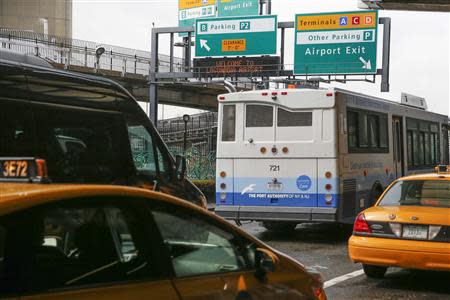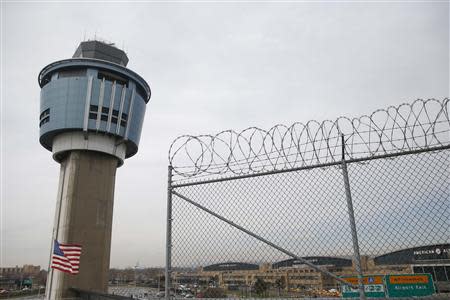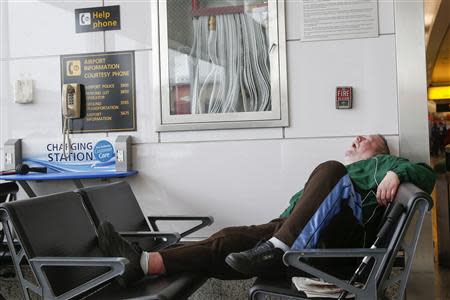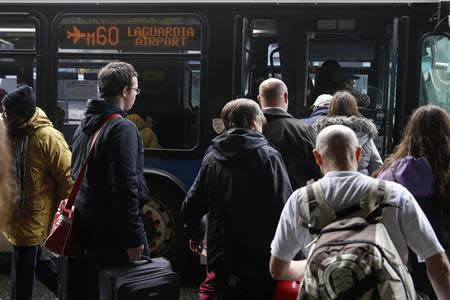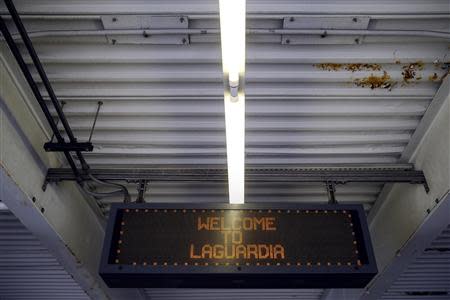Private money, public projects: More U.S. states doing deals
By Hilary Russ (Reuters) - Visitors to New York who land at LaGuardia Airport could be forgiven for not realizing they've arrived in one of the world's swankiest cities. The airport's leaky ceilings, threadbare atmosphere and meager food and public transit options put it at or near the top of lists of the worst airports in the United States. But with constraints on its resources and no appetite for further debt, the agency decided to tap private investors and developers to rebuild the 50-year-old central terminal for $3.6 billion, instead of using traditional public finance methods. It's not alone. Short on funding but big on need, U.S. states and cities are increasingly turning to such deals, known as public-private partnerships, or P3s, hoping to leverage assets that can bring a quick infusion of private dollars to rebuild crumbling infrastructure. The last 12 to 15 months have seen more deals and more opportunities to invest in the sector, said Jim Barry, head of BlackRock's infrastructure investment group. U.S. insurance companies and public pensions are all eager to invest. "After let's call it a decade of promise, I think we are actually beginning to see that movement," he said. "Over the next five years, you could have a lot of deal flow." The pacts have been common for decades in the U.K., Australia and Canada but have been slow to catch on in the United States. Now, analysts say, a shift is under way. The 2007-2009 recession was a motivating force. States and cities had no choice but to reduce spending on maintenance and construction, and the federal economic stimulus program enacted in President Barack Obama's first term offered only a temporary boost. At the same time, the other main source of transportation funding -- grants from the federal government -- also dwindled. The federal highway trust fund, which uses gas taxes to pay for highways and mass transit projects, is nearly broke. Now, there are more projects in development and more investor interest than ever in the U.S. P3 market, analysts say. Public agencies are also looking more closely at the pacts because they're able to add less debt to their books while shifting construction risk to the private sector. "You're actually seeing ... a real pipeline of projects" building up since 2012 and continuing through at least this year and possibly next, said John Medina, a global project analyst at Moody's Investors Service. The projects include everything from a light rail system in suburban Washington, D.C., to the replacement of hundreds of bridges in Pennsylvania. In the past, the United States has had an average of one or two public-private partnership deals valued at more than $500 million in the works annually, according to Bank of America Merrill Lynch's municipal banking group. This year, the bank said, there are 8 to 10 such projects. Thirty-three states allow varying levels of public-private partnerships for transportation projects, according to the National Conference of State Legislatures, up from 23 in 2006. Kentucky lawmakers passed such legislation in late March, but the governor vetoed it on Friday. Investors clearly have an appetite for infrastructure. Unlisted infrastructure funds raised $17.1 billion of capital for projects in North America - targeting private and P3 infrastructure projects in the United States - in the last quarter of 2013, according to Preqin, which provides data on alternative assets. That's the highest quarterly total on record, Preqin's data showed. The needs are huge. The nation should spend $3.6 trillion on infrastructure by 2020 to recover from decades of neglect, the American Society of Civil Engineers said last year. Wall Street and public officials have also expanded their definition of what a public-private partnership is - and thus expanded the number of deals that some people consider P3s - no longer applying it only to big, new transportation infrastructure. Student housing, courthouses, jails, parking garages and community centers are all trying out versions of such pacts. DALEY'S DEBACLE A previous generation of U.S. public deals with the private sector was plagued with glitches, in some cases short-changing taxpayers. The case of Chicago's 36,000 parking meters stands out, not as a perfect comparison to the current generation of deals but as the most-often-told cautionary tale. Facing a budget crisis in late 2008, then-Mayor Richard M. Daley leased the city's meters for 75 years to a private company for about $1.2 billion. Parking rates and citizen complaints soared. Months later the city's inspector general found that the city undersold the lease by, conservatively, about $1 billion. "Chicago is the worst-case scenario, and every mayor in the country knows about it," said Donald Cohen, executive director of the nonprofit In the Public Interest, which focuses on privatization and contract. "The city got hosed." Kent Rowey - an attorney at Allen & Overy in New York who represented Chicago Parking Meters LLC, majority-owned by Morgan Stanley Infrastructure Partners, in its acquisition of the Chicago concession - defended the deal, saying it was "actually a very good deal for the city of Chicago." Service delivery, billing, collections and facilities have "improved drastically," he said. Although public officials have become more savvy about public-private pacts, the deals are still "incredibly challenging" and controversial, said Toby Rittner, president of the Council of Development Finance Agencies. "It has to be done with a significant amount of due diligence." Private operators have also been on the losing end. American Roads, which owns and operates toll roads in the U.S. and Canada, filed for bankruptcy in July 2013, in part because traffic volumes fell during the recession despite projections in 2006 that they would rise. "Who can project 75 years of anything? It is not possible, not by anybody," said Cohen. "We're not against . It's a question of how you do them." Still, interest is growing as more projects close successfully, experts said. In November, for example, New York and New Jersey's Port Authority closed on a $1.5 billion deal to replace the 85-year-old Goethals Bridge, which links Staten Island to New Jersey. The deal was financed with about $460 million of tax-exempt municipal bonds, issued by a New Jersey public authority on behalf of the developer, which is responsible for repaying investors. The project also got a nearly $480 million federal loan and about $100 million of equity contributions from the developer. "That's the one that got a lot of people over the hump of being nervous about it," said the CDFA's Rittner. (The story corrects first name of Donald Cohen, executive director of In the Public Interest, in 21st paragraph) (Editing by Dan Burns and Douglas Royalty)

